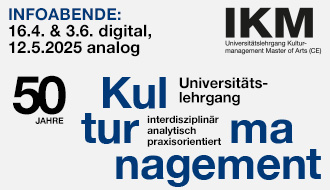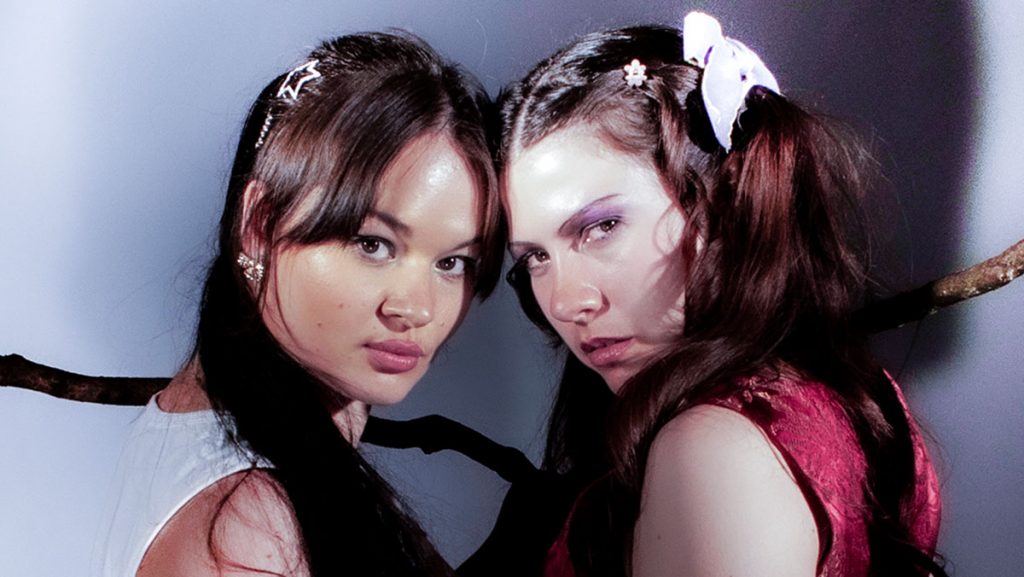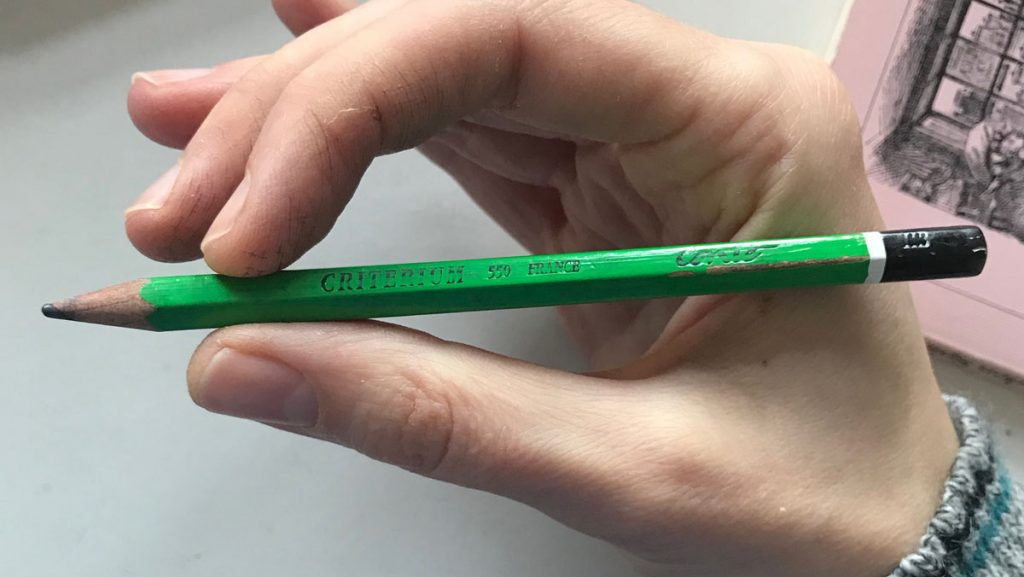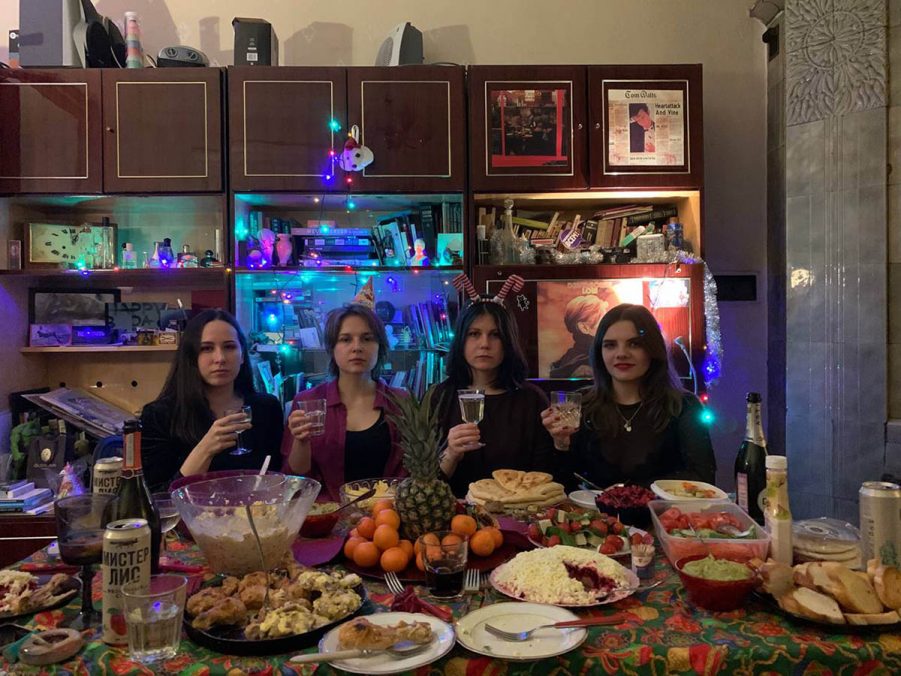
Nevertheless, ITMO is not only one of the most prestigious research institutions in Russia, but it is also one of the world’s leading educational institutions in its field. Hard to imagine that this could be fertile terrain for humor, speculation, and provocation, but in their case, that is what the environment evoked. Science was notable, but not to the extent of becoming the only concern of BIOROBOTY 019.
The collective is known for its performances, lectures, and roundtable discussions. I spoke with BIOROBOTY 019 about their work, speculative design, human and plant erotica, domestic environmental disasters, and four dream destinations where they would like to show their work.
How did the four of you start collaborating, and what exactly were the first works of this group?
Our studies were very chaotic at first. Therefore, we needed to team up and start doing something together. Otherwise, we’d just waste our time at the university. After 6 month of some formal university classes our master program started inviting very cool lecturers, thus giving us very cool opportunities. We had professionals like Natalia Fedorova, Olga Kisseleva, Daria Parkhomenko and many more teaching us science art theory and practice. From time to time they were like: “Hey, we have a festival in a week. Do you want to be part of it?” And of course we were all for it. We finally had a chance to build our portfolio. Our first project wasn’t about science art at all. More precisely, it was a craft, made conceptually at the intersection of science, USSR history and politics. We called it Pussycat and didn’t use any “high technologies” in production. It was a two-meter penoplex model of a cat, accompanied by toy mice and the newspaper Pravda of 1961. Just paper, glue, toys, paint and a pretty rare document that we accidentally found and almost ruined.
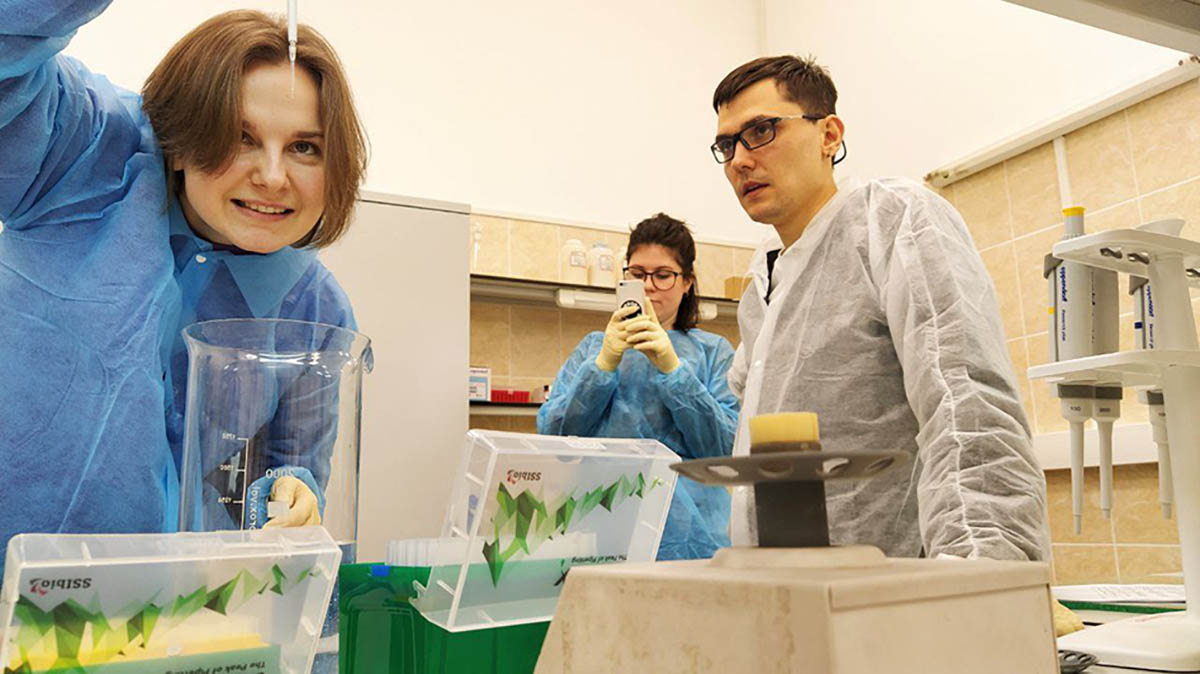
Fun story. This Pravda newspaper dates back from the times when Yury Gagarin became the first human to journey into outer space. We found it at Marta’s house (one of this St.Petersburg’s old and marvelous communal apartments). It belonged to some crazy woman, Marta’s former neighbour. So we decided it’d be cool to use this paper, because our Pussycat was about space and the USSR
So we took it, and put white toy mice on it in order to “show USSR scientists as laboratory mice in this political space race”. We couldn’t find white mice anywhere, so we bought gray ones and white paint. Everything would be fine, but all this was happening 6 hours before the festival. So we had nothing to do but put these wet intrauterine-looking toys on a newspaper that is 60 years old. The Pussycat project actually determined our further positioning as a group. We realized that we didn’t want to work with pure science art. First, because it’s funnier to provoke and speculate on its contexts, rather than to dive into some specific technology. Second, we didn’t have any deep interest in technologies or science. So we just loved having fun, meeting new people and learning exciting stuff. However, we studied at one of Russia’s leading higher education and research institutions, specializing in information technology, optical design and engineering. We had to be in the context so we started using a lot of different technologies: from robotics to bacteria. Although, the main idea of speculation and profanation still remained.
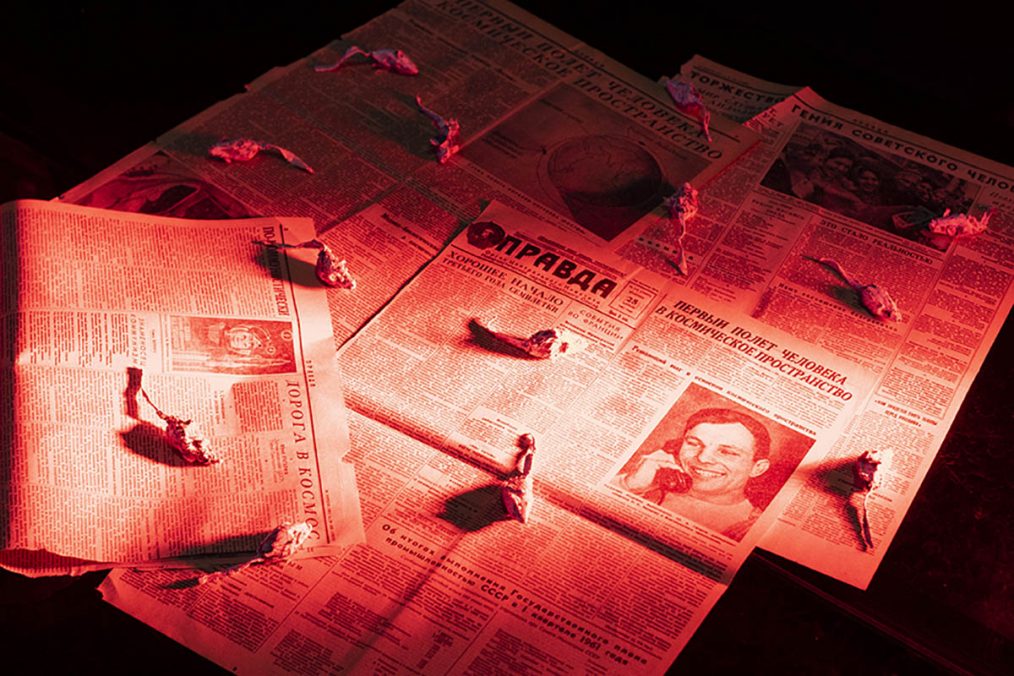
Pussycat project. The „uterine“ toy mice on the vintage Pravda Newspaper 2019. 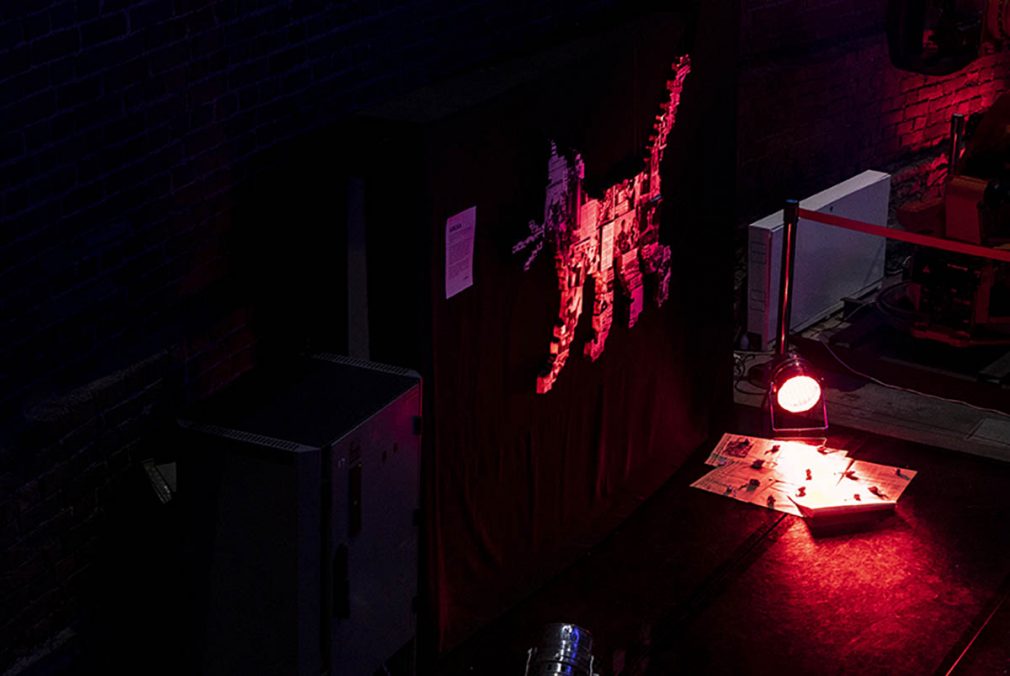
Pussycat project 2019.
It is very interesting to look at your portfolio, compared to artists from other disciplines you do have a lot of lectures and talks. How important is language for you?
Language is very important. We don’t go deep into technologies, but still work with them. To make projects of proper quality, we need to collaborate with other specialists: engineers, programmers, biologists, etc.
We need to explain our goals and objectives to them, so they’d agree to participate (usually for free). We are challenged to convince our collaborators that art is not paint and canvas, but an opportunity to do something cool together.
So someone codes, someone paints, but we mostly talk. In our lectures we talk about how to communicate with people from different fields, what is interdisciplinarity, why the concept comes first and how to push your disciplinary boundaries. Another important part about language and specifically art language is that it needs to be graspable by a wide audience. We are not interested in making statements for a small group of science artists. We need to reach a wider audience, who want to learn something new, just like we do.
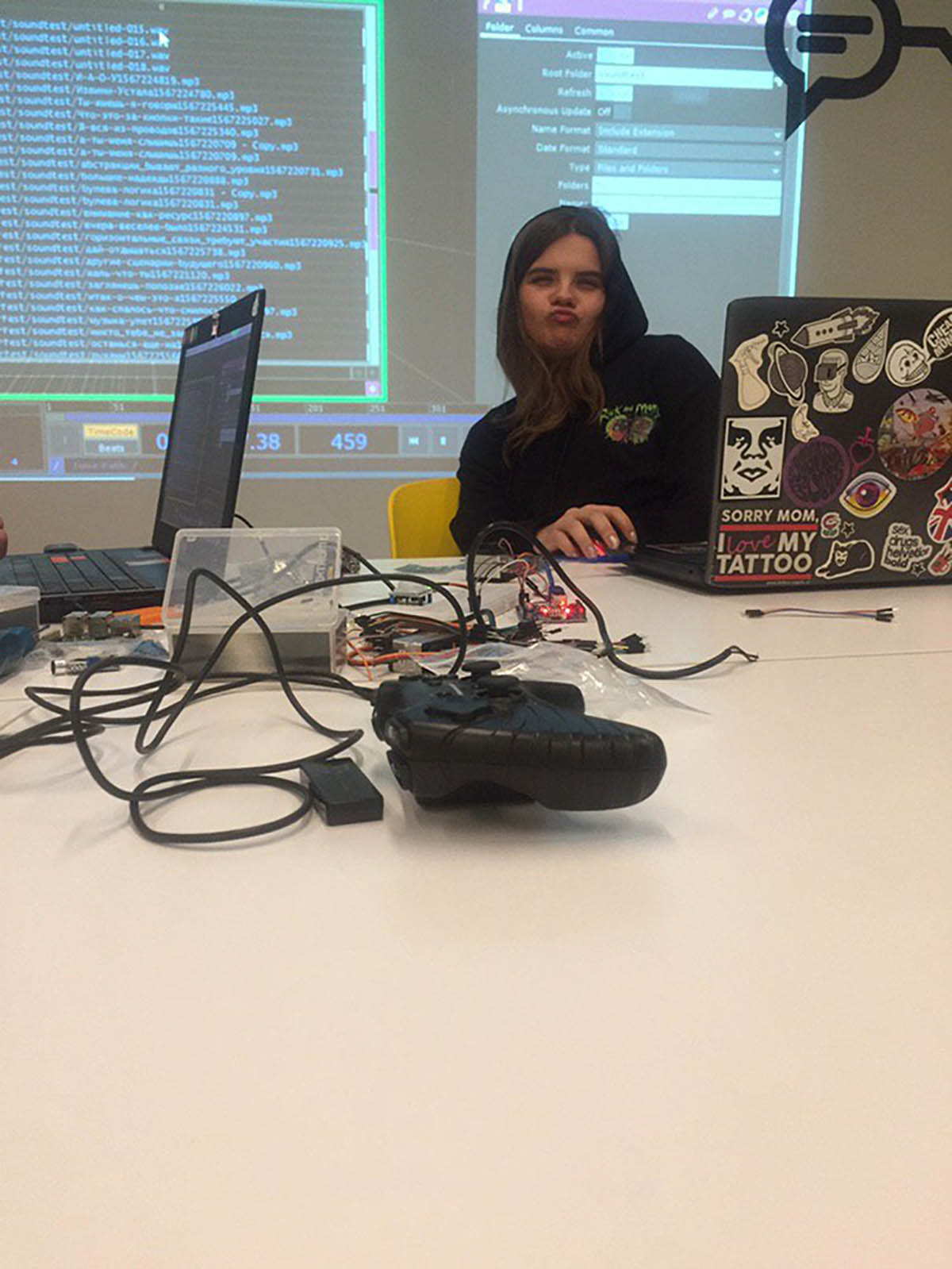
How does the audience interact? If you could tell us something about the reading group „Humans and vegetal eroticism: multispecies discussion“ at Art Electronica Festival or maybe from some other performances of BIOROBOTY 019?
We had no interaction with the audience in Humans and vegetal eroticism. Well, probably we had, but did not notice. We made it as an educational event aimed at explaining the cultural influence of plants. Kind of a philosophical summary of all our plant-based projects. Talking about interaction with the audience, Slimy Future is a good example. We made it purposefully speculative and audience-oriented. In October, as part of the Access Modes show’s educational program, Sveta arranged a speculative round table, dedicated to Physarum Polycephalum. Other BIOROBOTY 019 group members and a musician Anton Shchegolev participated as “experts”. We discussed physarum polycephalum being a victim of experiments, mosquitoes that steal our DNA, witches, Strugatsky Brothers, and God knows what else. The entire round table was almost an expromt. We wanted to create the most stuffy, illegible sur with a pinch of a criticism towards useless round tables. Our main reference was Nemoskva round table, as it was highly scandalous at the time. And we also used Lenin was a mushroom by Sergey Kuryokhin. So our table appeared to be a performance without a spectator (purely for ourselves, like a local meme). And at the same time it was a real round table with the audience. People who watched us took the content seriously. Someone even liked our “scientific facts”, although we did our best to make them obviously fictional. The moderator was deliberately dragging out the introductory part and was constantly bringing the discussion back to herself and her project. Speakers were arguing and weren’t listening to each other. We also invited wonderful bioartist and biotechnologist Laura Elidedt Rodríguez to give an expert commentary in Spanish without any translation to Russian. Even translated, her words had nothing to do with the round table’s topic. The whole event must’ve ended without a single spectator, as it was unbearable and meaningless. A real „massacre of the innocents“ (as our friend commented on it), a time-waste for people, who put their expectations into our little joke. However we didn’t want to offend anyone. We wanted to understand, what is more important for the audience: the happening itself or being a part of it (to make an effort, come to the gallery, commit to every 53 minute of this nonsense and look for a meaning)? It is quite possible that the spectators‘ ears generated some coherent meanings out of our rubbish talk. The power of engaging and especially young art consists in such spectator activity. Its awkward, naive and half-assembled semantics allows anyone to take on and finish it as they would like. As a result, to create their own, new, unique and meaningful piece.
Could you give us a guide in the materials that you use in your art?
Fish, plants, penoplex, computer code, scanners, motion sensors, people, a bus stop… For us the idea is more important than any materials. On the one hand, such a variety of materials can be difficult and exhausting in production. With each project we need to learn it from scratch. On the other hand, we are interdisciplinary artists and are not tied to a specific language. No matter how hard it is to work with something new, we think it somehow differentiates us from other artists. More on the struggle. When we were just starting, we were trying to make everything ourselves. But guess what? It’s always a bad idea when you’re living the “new project-new material” approach. It’s easier and better to find collaborators and make something really cool together. We had a great example of “don’t do engineering if you’re not an engineer” with the HHH project. Our installation collapsed right before the opening just because we tried to assemble everything ourselves.
Where do you get inspiration?
EVERYWHERE! Literally in the trash, in 00’s magazines, from lectures, on the streets. A friend can say something, and we appropriate it as a conception right away. The main rule of such igea generation is that we all need to be moved by the idea. Otherwise we won’t work at full capacity. Maybe the best example of idea generation in our practice was Vegetal porn. Smolny Institute’s curators Asya Drozd and Sveta Glygalo invited us to participate in the Paradistopia online show. We were given the task to do something speculative about futuristic society. At the time we were full into plant sexuality, plant politics, Luce Iragaray, Michael Marder…So we were celebrating Sveta’s birthday one evening, went to the cinema, got drunk, and went for a walk. And at some point of our midnight stroll we realized that porn+plants is a perfect match. Something just clicked. We imagined that our future sexuality will extend to the point of vegetable porn. So we proposed it to curators, created a plant-based channel on PornHub and successfully showed the project on Paradistopia, Ars Electronica, and at our first solo exhibition at 2 4 х 4 Gallery.
In the installation „Goldfish, The Residential complex“ you thematize global ecological disasters, but also local ones such as in St Petersburg itself. Can you tell us something about this action and which method did you use to detected the youngest and most unhappy-looking individuals in the Neva River?
The Neva is not the cleanest river. Despite this, many locals constantly hang out there fishing. We decided to get involved. We went to the embankment and approached the first fishermen we saw. We asked them to share some Neva fish they managed to catch, and not only they gave us a couple of bleaks and crucian carps, but offered some warm tea. Our fishermen Michail and Sergey were using these little fish-babies as bait, so we didn’t feel any regret involving them in our experimental project. We also looked for the smallest and weakest outsiders to get. Not everyone took root in our residency, but those who did looked healthy and briskly, swimming around their human-like living rooms.
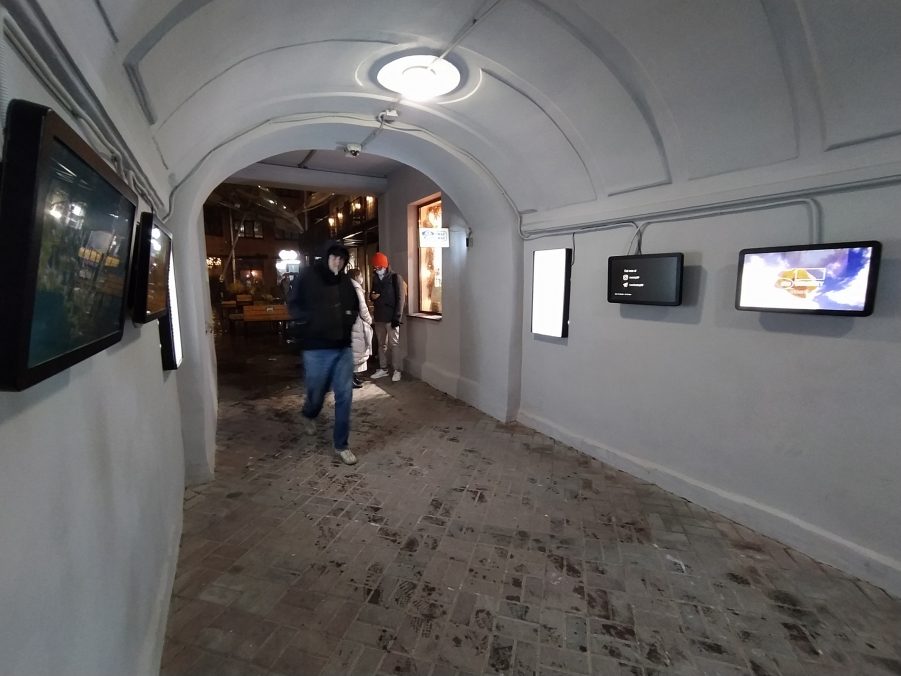
Vegetal porn project in Berthold center. People are not yet interested 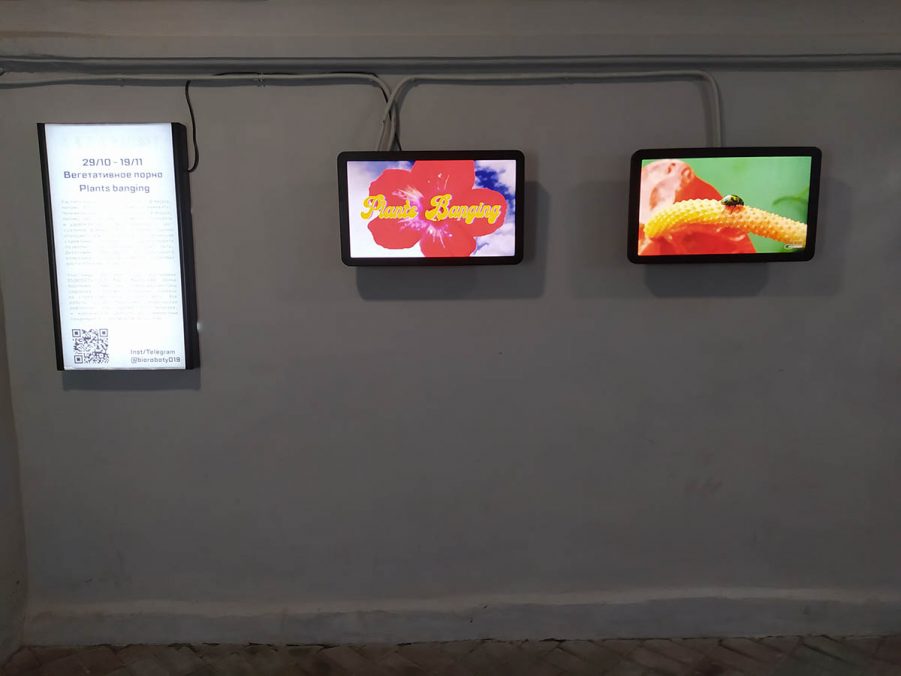
Vegetal porn project in Berthold center 2020.
PHYSARUM FORTUNETELLER is…
…a speculative „high-tech“ divination machine designed to stir up the viewer’s critical thinking and undermine the unconditional faith in conventional authorities, be they scientists, art critics, visionaries or anyone else. We were interested in the phenomenon of man’s desire to entrust himself and his life into someone’s hands, more reliable and authoritative than his own. This creates fertile ground for manipulation and fits perfectly into the aesthetics of science art. Complex scientific theories and technologies + abstruse sublime exhibition text = a product that is difficult to understand, crushes with its authority and inspires awe. “Physarum Fortuneteller” confirmed our desire to interact with the audience, track their reaction, and work for gentle ironic provocation. Science artists often advertise their projects as experiments. It turns out that with our speculative projects we also conduct experiments, but rather of a social nature.



